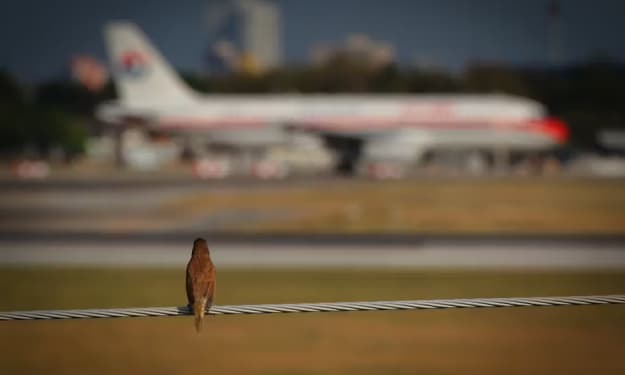Leonardo da Vinci: Beyond the Renaissance Genius
Exploring the Theories of Time Travel, Extraterrestrial Encounters, and Hidden Messages in His Masterworks
# Leonardo da Vinci: Genius, Time Traveler, or Extraterrestrial Envoy?
The north Apennines of Italy, just outside Florence, served as a natural classroom for a young Leonardo da Vinci, who, despite being excluded from prestigious academies due to his illegitimate birth, immersed himself in the study of nature. While his contemporaries were confined to classrooms, Leonardo's self-directed exploration of the natural world laid the foundation for his unparalleled contributions to art and science.
Florence's reformed Platonic Academy was inaccessible to Leonardo, leaving him to glean knowledge from the environment. As Philip Coppens highlights, Leonardo’s exclusion from formal education compelled him to study the natural world, thus creating a body of knowledge that rivaled the output of the esteemed academy. He meticulously examined rocks, birds, water flow, and mountains, fostering a profound understanding of the natural world that no other Renaissance artist exhibited to the same degree.
A pivotal moment in Leonardo's life was his discovery of a cave in the Apennines, an event he recorded in his journal around 1480. This encounter had a significant psychological impact on him, as suggested by author Ian Roberts. The mystery of the cave’s location and its potential role in Leonardo’s development has intrigued many, with some, like author William Henry, proposing that the cave might have been a time portal. Such theories suggest that Leonardo might have experienced time travel, allowing him to gain futuristic insights.
Leonardo's genius has often been speculated to stem from extraordinary encounters. David Childress posits that certain historical figures, like Leonardo, had visions far beyond their time, prompting questions about the source of their inspiration. Leonardo’s ability to conceive of inventions such as helicopters and military weapons, centuries before their time, has fueled theories of extraterrestrial influence. His work on the Annunciation, where the angel Gabriel appears to Mary, has led some, like Giorgio A. Tsoukalos, to believe that Leonardo saw himself as a messenger, akin to Gabriel, imparting revolutionary knowledge to humanity.
The speculation extends to Leonardo’s fascination with mirror writing, which might have been a technique to encode hidden messages in his works. At Northeastern University, graphic designer Terrence Masson explored this idea using computer technology to search for hidden messages in Leonardo's masterpieces, like the Mona Lisa. This enigmatic portrait, with its mysterious smile, continues to captivate scholars and enthusiasts. It’s theorized that Leonardo used specific hand positions in his paintings to signal where to place mirrors, revealing hidden images, potentially even extraterrestrial faces.
The theory of Leonardo being influenced by extraterrestrial beings is further supported by his final works, such as St. John the Baptist. This painting, with its shadowy background and the figure pointing upwards, suggests a connection to another realm, possibly indicating Leonardo’s awareness of higher dimensions or beings.
Leonardo's unfinished work, Adoration of the Magi, examined using infrared technology by Dr. Maurizio Seracini, revealed an intricate underdrawing far more complex than visible to the naked eye. This hidden layer depicted scenes of pagan temples being rebuilt, which was controversial during the Renaissance. The presence of the Egyptian lotus flower, symbolizing the "flower of life," in these sketches suggests Leonardo’s deep engagement with sacred geometry, a concept believed by mystics to connect with cosmic intelligence.
The flower of life, representing the universe's geometric structure, fascinated Leonardo, who was obsessed with its implications. This symbol is considered a key to understanding the universe's creation and is thought to embody advanced knowledge, possibly accessed by extraterrestrial beings.
Leonardo da Vinci’s life and work continue to inspire awe and speculation. His ability to foresee future technological advancements, coupled with his cryptic artistic techniques and profound understanding of sacred geometry, raises intriguing questions. Was Leonardo merely a brilliant mind of his time, or did he tap into a source of knowledge beyond the earthly realm? Whether through time travel, extraterrestrial encounters, or sheer genius, Leonardo's contributions remain a gift to humanity, challenging us to reconsider the boundaries of human potential and the mysteries of the universe.
About the Creator
Benjie Maybuena
📚 A dedicated bookworm with a passion for words and stories. 🖋️Writing poems is my creative sanctuary, and I find solace in crafting verses that touch the soul. Exploring the worlds of imagination one page at a time. #PoetryEnthusiast 🖊️
Enjoyed the story? Support the Creator.
Subscribe for free to receive all their stories in your feed. You could also pledge your support or give them a one-off tip, letting them know you appreciate their work.






Comments
There are no comments for this story
Be the first to respond and start the conversation.